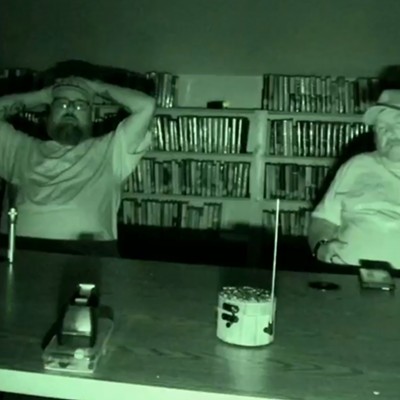Appropriately enough, the oldest building in Pittsburgh was built as a place where you could go hide while blasting away at other people with impunity. As such, every Steelers fan, Pirates fan and alternative-weekly columnist should feel a special bond to it.
The two-story, five-sided blockhouse in Point State Park was constructed in 1764 as part of Fort Pitt, built to withstand the incursion of nearby Indian tribes who might object to the sudden appearance of white people. According to the Fort Pitt museum, that makes the structure not just the oldest building in Pittsburgh; it's the oldest documented structure to be still standing west of the Allegheny Mountains.
The blockhouse was also known as "Bouquet's redoubt," a reference to the man who built it, Col. Henry Bouquet. (A "redoubt" sounds like a structure suitable for an uncertain city, but the word is used to refer to any defensive structure built as part of a fort.) Bouquet had to enhance Fort Pitt's defenses, architectural historian Franklin Toker writes in Pittsburgh: An Urban Portrait, because the fort's defenses "eroded badly in the spring floods." So Bouquet built redoubts: thick-walled structures of brick, stone, and wood, for defenders to hide behind and gun down attackers.
Fort Pitt originally had several such structures, though historian Leland Baldwin says that some may have been "merely houses that in later years were moved from the fort ... and utilized as residences." Whatever the case, residents began dismantling the fort before the American Revolution, and by the early 1790s it had disappeared completely. Almost completely, I should say -- Baldwin says that its bricks "were distinguishable by their whitish color, and for many years they were pointed out in the buildings of the town."
The Point went through numerous changes. At various times, it housed an amusement park and exposition buildings, a warehouse district, and a slum where future Renaissance Mayor David Lawrence himself grew up. The blockhouse was the only constant. Pittsburgh being Pittsburgh, however, there's probably some old codger living in Lawrenceville who claims to remember how things were before it was built, and who says the city's been going downhill ever since. (And at this point, who's to say he'd be wrong?) The roof and other elements of the structure have been renovated over the years, but the blockhouse still stands on its original sandstone base. The blockhouse may never have needed to repulse an attack -- it was built a year after the only significant military engagement at Fort Pitt, Pontiac's Rebellion of 1763 -- but it has withstood centuries of industrial expansion, urban redevelopment schemes, and even the graffiti artist Mook.
How did this happen? In 1894 the building's owner, Mary Schenley, bequeathed the structure over to the Daughters of the American Revolution. And believe me, you don't mess around with the DAR. Not unless you want to end up with a brooch stuck between your ribs. Even the Pennsylvania Railroad, arguably the most powerful corporation of the day, couldn't compete with the angry biddies of the D.A.R. with its plans to remove the building to lay down some railroad track.
As Barringer Fifield's Seeing Pittsburgh recounts, "[I]n another fierce battle," the D.A.R. "fought to keep [the Blockhouse] out of less destructive yet still, to the D.A.R., suspect hands -- those of the Commonwealth of Pennsylvania. The state wanted the building as part of Point State Park," but the D.A.R. refused to yield control of the building to the government and they retain control over the site today. The blockhouse is a relic of government's power to suppress native peoples, and of the distrust the country's conservative elite have for their government.
The relatively pristine nature of the site has offered occasional opportunities for research. Last spring, an expansion of the nearby Fort Pitt Museum afforded archeologists a chance to dig beneath the blockhouse. There, according to news accounts, they found some brass buttons, pottery shards, some old ammunition and the bones of some pigs and cows who -- for all we know -- may have been retained to work as sappers by the Native Americans. The meager find was a testimony to the blockhouse's quiet history, despite all the change around it. There was no sign of Jimmy Hoffa. No members of the D.A.R. either.










